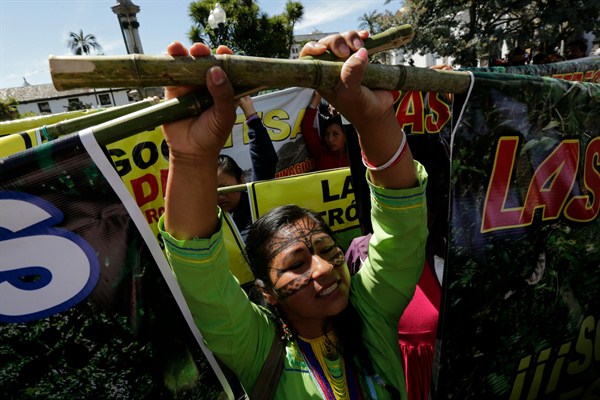In mid-July, government officials inaugurated operations at the sprawling Mirador mine in southern Ecuador. An open-pit copper, gold and silver mine in the Zamora-Chinchipe province near the Peruvian border, Mirador’s reserves reportedly include 3.2 million tons of copper, 3.4 million ounces of gold and 27.1 million ounces of silver. The amount of copper makes it Ecuador’s largest copper mine, but still smaller than the massive copper mines in Chile and Peru. The mine, which can already produce 10,000 tons of minerals per day, is expected to increase its output to 60,000 tons per day and potentially earn the Ecuadorian government $7.6 billion over its lifespan.
Its opening came a month after President Lenin Moreno’s market-friendly government, eager to rebuild Ecuador’s underdeveloped mining sector and end its reliance on crude oil exports, announced an ambitious new public mining plan. It aims to hugely expand mining exports from $270 million in 2018 to more than $2 billion by 2021. If realized, the mining sector could soon contribute as much as 4 percent to Ecuador’s GDP, up from the current 1.6 percent.
Ecuador’s race to jumpstart its mining industry, though, faces considerable opposition from local environmentalists and indigenous communities, both of whom fear that mining will cause irreversible environmental damage to vital waterways and agricultural lands. Local communities in and around areas with identified mineral deposits have reported a wide range of human rights violations, including forced evictions, the destruction of property, legal charges, arrests, harassment and even murder.

